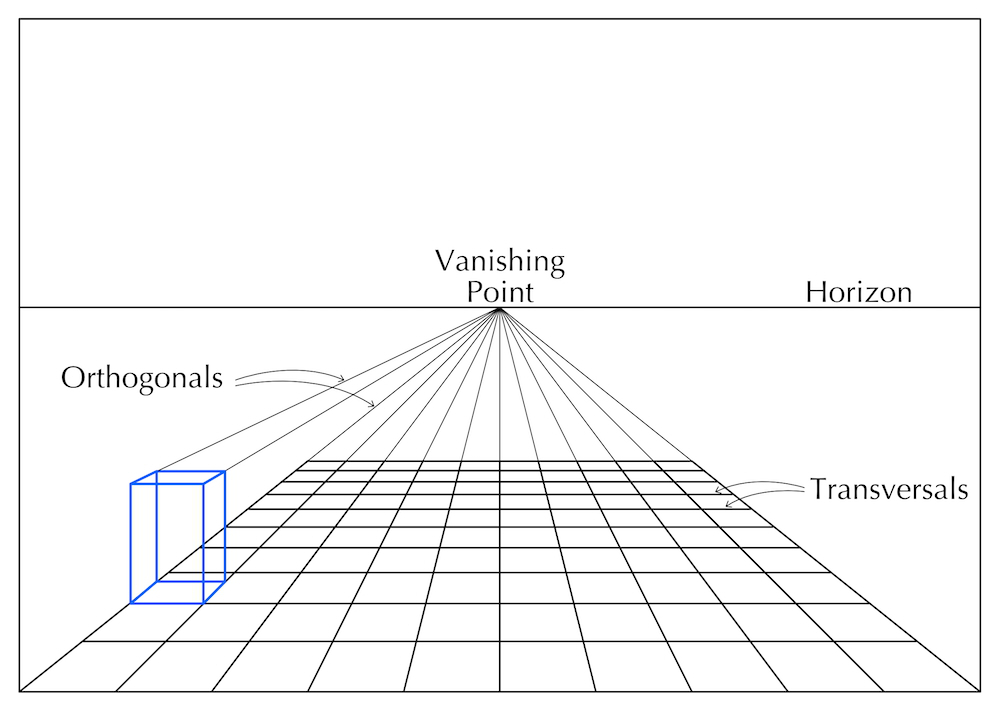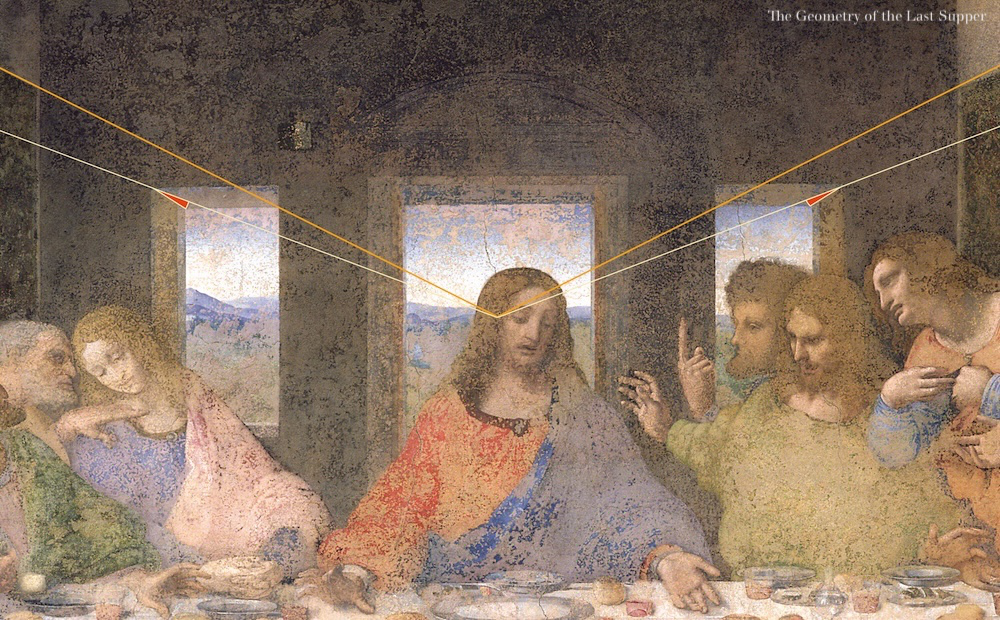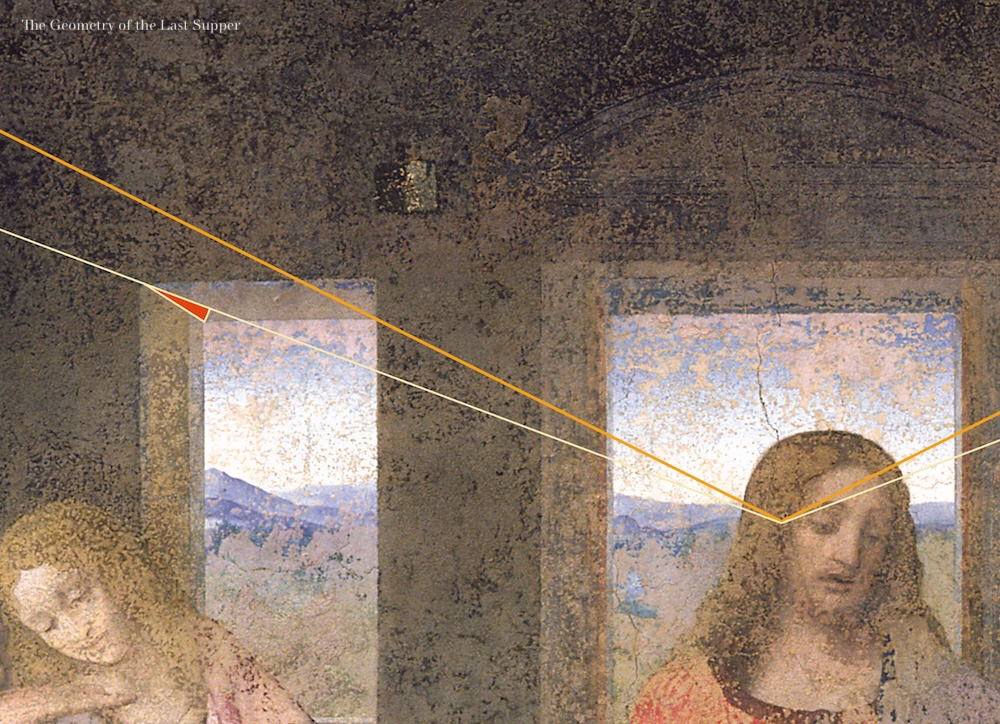Breaking the Law #1

The Early Renaissance discovery of linear perspective was a major breakthrough which revolutionised the visual arts. For the first time, painters were able to represent objects receding into the distance with accuracy.
In short, the idea is to draw on the canvas a checkerboard which consists of converging lines called orthogonals and an array of parallel horizontal lines called transversals.
As the eye moves towards the centre of the composition, the gap between the transversals becomes progressively narrower contributing to a sense of depth. The orthogonals, however, converge toward a single point called the vanishing point which defines the height of the horizon. The receding side of an object in the scene should follow its own orthogonal directed towards the vanishing point.
A detailed inspection of the windows shows that their construction astonishingly transgresses the laws of perspective established only sixty years before Leonardo da Vinci started working on the Last Supper.

Here, the non-compliance is easily proved by tracing the orthogonal that passes through the corner of each window (white lines) where the thickness of the wall is apparent. As we can see, the painted perspective clearly differs from the theoretical line (the discrepancy is shown in red).

The perspective used for the windows and the door is therefore 'incorrect'. Did Leonardo resort to some other logic significant enough to justify this emancipation from a strict obedience to the theory of perspective?